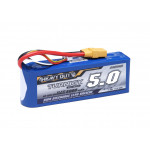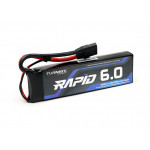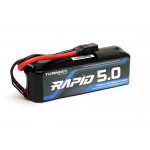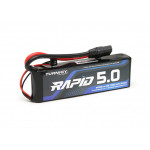
You've probably seen paramotors in movies, for example in the James Bond film The World is Not Enough when KGB agents swoop in on powered paragliders while firing machine guns at the British spy.
Remote control paramotors are powered in much the same way as their full-sized counterparts. The wing is attached to a gondola at fixed points to allow for a neutral balance point.
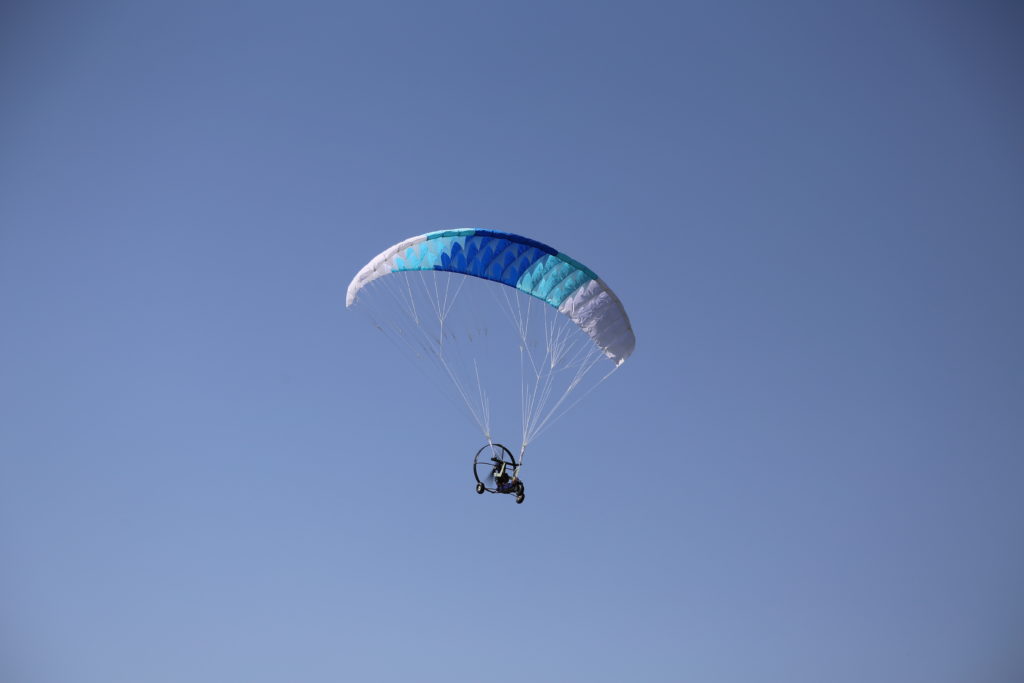
An amazingly simple aircraft, the H-King paramotor is perfect for calm mornings when the air is still and crisp. If you enjoy a relaxing flight at your local air club or park, then an RC paramotor is just what the doctor ordered. The arms are attached to brake lines and are used to control flair and yaw. These are called D-lines and change the drag on each side of the wing in order to control the direction of travel. The brake is not used as an elevator although it is generally the same stick movement on your transmitter. On your first flight, you may try and move the elevator and I assure you it will do the opposite of what you think it will. You will stall and drop out of the sky very quickly. Lift is created through throttle which changes the angle of attack on the wing along with forwarding flight. The paramotor shares many similarities to a parachute however they are not the same. The two servos that control the arms on either side of the gondola can be disguised into a pilot figure if you choose. It is not essential however it can be helpful as you generally have to add weight to a paramotor to get it to fly well. For those looking for something unique, an RC paramotor is something very different from a traditional fixed-wing or even rotary-wing aircraft.
How to Fly the Paramotor: Controlling Direction
There is always room in the hanger for one more and especially one that tucks away so easily. RC paramotor controls are very simple. Throttle controls ascent and descent and the D-lines control yaw left or right. That's about it.
How to Fly the Paramotor: Brake Lines
The brake lines or D-line controls the shape of the trailing edge of the wing. Pulling the left brake line causes the wing to yaw left and pulling the right brake caused the wing to yaw right. Pulling both brake lines at the same time creates drag on both sides which slows the aircraft. Applying too much brake will cause the wing to stall and it may not be recoverable. In full-sized paramotors, an emergency wing is deployed at this point.
RC Paramotors: What are they like to fly?
They are like nothing you’ve ever flown before. Gentle, graceful, and a lot of fun. If you already enjoy gliders, you'll love paramotors. The model has a tendency to fly like a pendulum at times, however, this is all down to technique. The model will be prone to swinging when you’re first getting the hang of it. If the model starts to rock forward and backward I’ve found that on the return stroke simply apply throttle to get the gondola to stop rocking, then adjust the throttle to get the wing at the right angle of attack to gain altitude. I also found that rocking can be reduced by turning either left or right. Learn how to manage throttle for the best results.
Launching Your RC Paramotor
I ensure the wing is lying completely flat on the ground. Ensure the wingtips are not folded over and that the lines are not tangled. The gondola should be pulled up and over in a neat arc. When you are pulling to wing up be sure that the lines do not go slack as this will cause the wing to stall. You have to be brave enough to leave the model go and power on out. You'll get the hang of it.
Where can you buy an RC Paramotor?
HobbyKing has just released an excellent entry-level paramotor designed for the beginner or intermediate hobbyist that is well priced, easy to assemble, and easy to fly. YouTuber James Presnell was the driver for this project and has been kind enough to document his setup procedures on his channel RC Air Adventures.
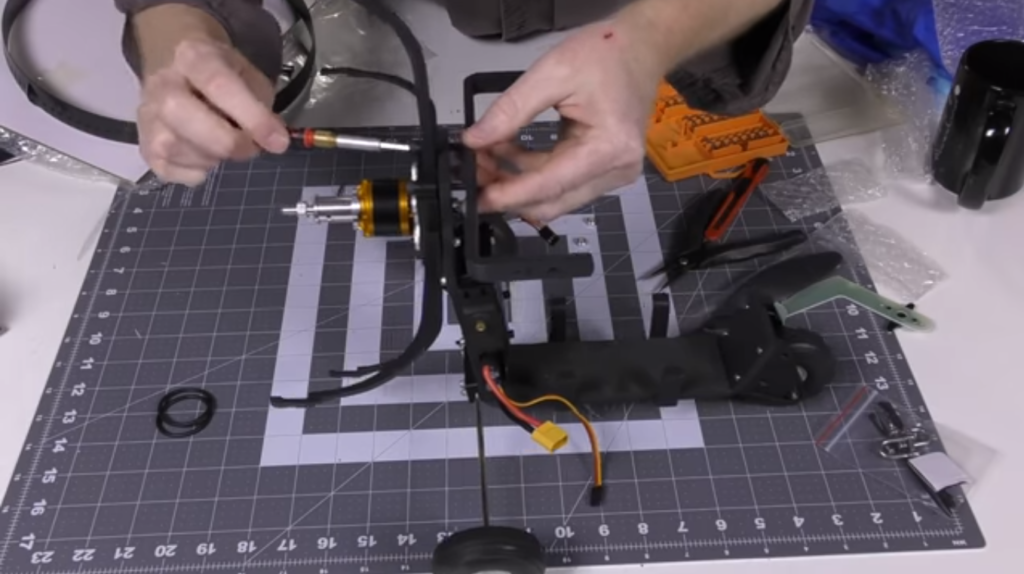
Latest HobbyKing Release: RC Paramotor
Paramotors have historically been the preserve of expensive European brands, however, that's about to end with this latest release from HobbyKing. The HobbyKing Paramotor is extremely easy to fly due to its gentle and stable flight characteristics. Once you're used to it, it will perform loops and rolls with ease. The high performance 2250mm sail opens quickly for easy launching and retains its shape even in turbulence. The single skin durable sail is made from 100% ripstop fabric and comes pre-rigged to the durable aluminum gondola with tough nylon chords. There is a high level of prefabrication so assembly time is minimal. As a "Plug and Fly" product, all you need is your own transmitter, receiver, and battery. The H-King Paramotor is fitted with a powerful 3530-1400KV brushless motor swinging a 10 x 4.7 propeller, it also has a 50 amp electronic speed controller with 5 amp BEC and 2 powerful 15kg high torque metal geared servos. A 3S Li-poly battery is recommended and it can vary in capacity to suit different flying conditions. The recommended flying weight is 1.6 to 2kg, but for windless conditions, it's best to use a lighter battery to stick to the 1.6kg side of the scale. In windy weather, it's better to use a heavier battery and fly around the 2kg mark. The undercarriage is easily removed for hand launching and catching and also for slope soaring. If you’re keen to fly something a bit different, the H-King Paramotor is for you. It's great fun to fly without being too challenging and it looks great in the air. You can purchase the product either pre-assembled or as a "plug and fly", so you'll be airborne very soon after receiving your delivery.
Features:
- High-performance parasail
- Plug and Fly format (you only require a Tx, Rx, and battery)
- High level of prefabrication for quick assembly
- Gentle flight characteristics, however, it can perform loops and rolls
- Removable undercarriage for slope soaring
- Durable aluminum airframe
- Wide flying weight range
Specs:
- Type: Plug-N-Fly Paramotor
- Parasail Span: 2250mm
- Motor: 3530-1400KV brushless
- Propeller: 10x4.7
- ESC: 50amp
- BEC: 5amp
- Servos: 2 x 15kg high torque metal geared
- Flying Weight: 1.6 to 2kg
- Recommended Battery: 3S LiPo (not supplied)
Required:
- 1 x 3ch or more transmitter
- 1 x 3ch or more receiver
- 1 x 3S (11.1v) LiPo battery and charger

